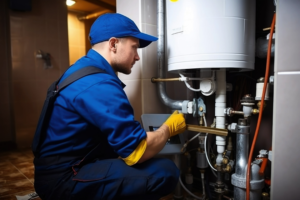 Don’t these people have a calendar? The cooling season is nearly over. Why are they talking about my AC options as if it’s time for a new installation or replacement?
Don’t these people have a calendar? The cooling season is nearly over. Why are they talking about my AC options as if it’s time for a new installation or replacement?
Because it is, that’s why!
Okay, not for everyone. However, if you’ve noticed that your air conditioner just really isn’t getting the job done well anymore, or if you’re thinking about upgrading for improved functionality/better energy efficiency, then the end of the summer season is a perfectly fine time to replace your system. At the very least, it’s a great time to review your options so that you can make a truly informed decision when the time to replace does arrive.
So today, we are going to give you a very brief rundown on some air conditioning options that you are wise to consider. Don’t be afraid to step out of your comfort zone—directly into your new and improved comfort zone! If you have any questions or need HVAC services in Greenwich, CT, be sure to give us a call.
Heat Pumps
We are going to skip over central air conditioning systems in today’s posts, as this is certainly the type of system that most homeowners are already going to be familiar with (and with good cause!). First, let’s take a look at the air-source heat pump, which is actually quite similar to the central AC—with one major difference.
Heat pumps such as this use air ducts to distribute conditioned air throughout the house. Unlike a split central AC, though, the heat pump is able to reverse its refrigerant flow. In doing so, the system is able to reverse its operation, as well. That means that it can reverse the function of its coils, drawing heat out of the air outside and using that heat to warm up the interior living space. That allows for both great versatility and great efficiency.
Ductless Mini Splits
Ductless mini splits do come in AC-only models, but most homeowners cannot turn down the benefit of the heat pump option. Unlike the air-source heat pump described above (though these are also air-source systems, which will be clearer below), they don’t use ductwork to do the job. They use wall-mounted blower units, each connected to a single outdoor unit and controlled by its own thermostat.
A single outdoor unit can typically accommodate up to 4 blowers. The systems can both heat and cool when they are heat pump models, and they are great for existing homes without existing ductwork. Plus, you can easily maintain different temperatures in different areas of the house, as needed.
Geothermal Systems
Okay, you’ve seen us say “air-source” a few times, and that phrase refers to systems that exchange heat with the air. A geothermal heat pump, on the other hand, exchanges heat with the ground, making it a ground-source heat pump. Why exchange heat with the ground?
Well, it’s a more complex installation, but it is also incredibly reliable to heat your home with a ground-source system. The temperature underground is more consistent than that in the air, and sinking heat into the moderate temperature of the earth is easier than dispersing heat into the air in the summer.






